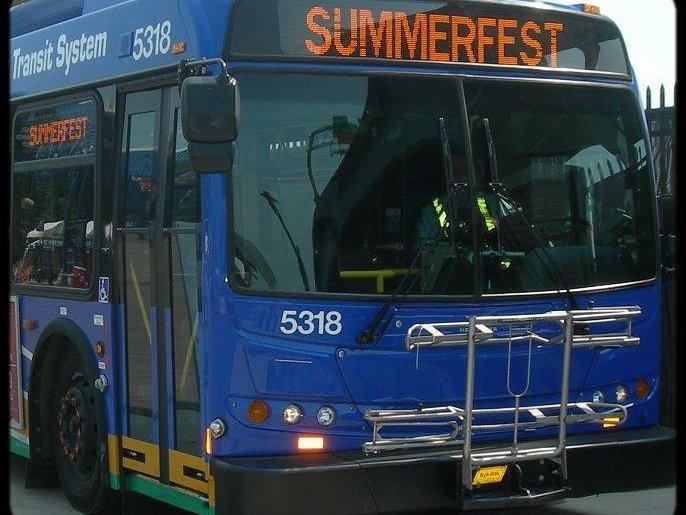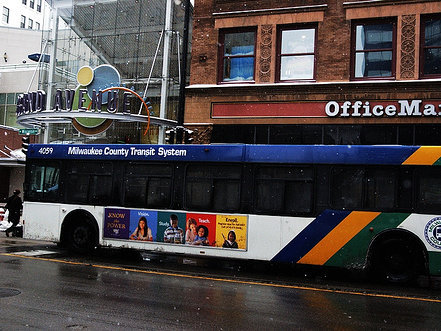Earlier this year, the system purchased 90 new clean diesel, near zero emission vehicles from Winnipeg-based New Flyer and roughly half have been delivered so far. New buses arrive each week and the order should be filled by year's end.
The purchase came as a part of the American Recovery and Reinvestment Act, better known as the Stimulus bill, and cost a total of $32,995,506. Milwaukee County has purchased an additional 35 buses, which should arrive in 2011.
The new, 59-passenger (39 seated, 20 standing) vehicles are clean diesel, near zero emission buses. Using the same diesel fuel as previous buses, these vehicles have an after-treatment system that reduces the emissions by nearly 85 percent and emits nearly no particulate matter.
To accomplish this, the buses feature the Cumins After Treatment System. Exhaust gas passes through a filter and into a decomposition reactor, where a fine mist of diesel exhaust fluid from the holding tank is sprayed into the exhaust stream.
This spray breaks the exhaust down into ammonia and then, through a catalytic reaction, the ammonia and remaining oxides of nitrogen are converted into harmless nitrogen gas and water vapor.
A secondary catalyst converts and remaining traces of ammonia before the exhaust exits the system.
"We're really pleased with how green these buses are," said Jacqueline Janz of MCTS. "We're trying to do what we can to be green and give more to our customers while spending our money as wisely as possible."
A noticeable change comes on the roof, where the air-conditioning unit has been relocated from its previous position on the back end of the vehicle. Fans will be positioned to continuously blow fresh air through the unit, which should provide riders with additional comfort.
The upgrades aren't limited to the exterior or under the hood. On the inside, riders will find a new blue color scheme, increased lighting and more window space, creating a brighter atmosphere.
Little tweaks have been made to the stop request sign, too. All the buses are equipped with bike racks and have low floors for easy boarding.
"We wanted to change the look of the buses so they were noticeably different from our previous fleet," said Janz. "It's a much more modern-looking bus."
"Pair that with the green aspect and we think that our current customers and new customers will like them a lot."
By purchasing new buses, the transit system expects to save money on maintenance costs. Most of the buses being replaced are about 16 years old. While still in good operating condition, the financial commitment necessary to maintain the vehicles was beginning to grow.
"There's only a certain life of vehicles," said Janz. "A 16-year-old bus is quite old. Buses run around 18 million miles a year so you like to retire them after about 12 years."







